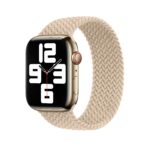What Is A Rangefinder Camera? It’s a classic camera system known for its precise manual focus, bright viewfinder, and compact design. At WHAT.EDU.VN, we help you understand its features and benefits, offering a clear path for anyone curious about this iconic photographic tool. Discover how rangefinder cameras combine historical significance with modern usability. Whether you are interested in digital rangefinders, coupled rangefinders, or the history of rangefinders, this guide will answer your questions.
1. Understanding Rangefinder Cameras
Rangefinder cameras use a unique double-window system that offers incredibly accurate manual focusing. Unlike modern autofocus systems, rangefinders rely on the photographer’s skill and precision.
The rangefinder window, located on the photographer’s right, connects internally with the larger viewfinder window to facilitate focusing. Photo by s58y and licensed under CC BY 2.0.
A rangefinder camera features a viewfinder window with bright lines indicating the frame and a separate rangefinder window slightly apart. This window projects a second image onto the viewfinder. When these two images align, the lens is perfectly focused on the subject. This method ensures sharp focus by using triangulation to gauge distance, historically used by cartographers and sailors.
A look through the viewfinder of the Olympus 35 RC 35mm rangefinder camera. The smaller bright rectangle in the center of the frame is the focusing patch. Photo by Peter Lindberg and licensed under CC BY 2.0.
The photographer adjusts the lens focus until the focusing patch merges with the main viewfinder scene. After achieving focus, examining the lens’s distance scale reveals the focusing distance. Knowing this distance allows for precise aperture settings using the depth of field scale to achieve the desired shallow or deep focus.
A look at the difference between an unfocused shot (the bright focusing patch in the middle of the frame doesn’t line up with the viewfinder view) and a properly focused shot (the focusing patch lines up perfectly with the main scene). Photos by Atorero and licensed under CC BY 3.0.
2. A Brief History of Rangefinder Cameras
Early rangefinders used separate systems to determine focusing distance, which photographers then transferred to the lens. The Kodak 3A Autographic Special in 1916 marked the beginning of coupled rangefinders.
The Kodak No. 3A Autographic Kodak Special is considered to be the first rangefinder camera. Photo by Museoscienza.org and licensed under CC BY-SA 4.0.
Leica 35mm film cameras significantly advanced rangefinder technology. The Leica M3 in 1954 combined the viewfinder and rangefinder, becoming a commercial success with over 220,000 units sold. The M stands for messsucher, the German word for viewfinder-rangefinder.
The Leica M3 was a hugely popular and influential rangefinder camera. Photo by Andrew Basterfield and licensed under CC BY-SA 2.0.
Other prominent brands included Nikon, Canon, Kodak, Zeiss, and Argus. Despite the rise of single-lens reflex (SLR) cameras and autofocus lenses, rangefinders persisted, with Japanese brands like Canon, Olympus, and Ricoh producing popular fixed-lens models.
Today, despite electronic viewfinders, companies like Pixii and Leica continue to develop advanced rangefinders. The Leica M11 sells for a premium, demonstrating the system’s enduring appeal.
The Leica M11 was announced in 2022, and the rangefinder camera is alive and well.
Fujifilm’s X100 series, inspired by vintage designs, mimics rangefinder aesthetics but doesn’t employ a true rangefinder focusing system. Instead, it uses an “electronic rangefinder,” which is a small EVF display for easier manual focusing.
3. Advantages of Using Rangefinder Cameras
Rangefinder cameras offer several unique benefits:
3.1. Highly Accurate Focus
Rangefinders provide extremely precise focus. The human eye is adept at detecting split images, making it easy to determine when focus is achieved.
3.2. Rapid Focusing Capabilities
With practice, rangefinders allow for quick focusing, even in low light or with poor eyesight. The stable focus makes them suitable for street, documentary, and even action photography.
3.3. Seeing Beyond the Frame Lines
The viewfinder shows more than the captured frame, allowing photographers to anticipate action entering the shot. This wider view helps in capturing decisive moments.
The framelines seen when using a 28mm (bigger frame) or 90mm (smaller frame) lens on a Leica M8 digital rangefinder camera. Illustration by Leica.
3.4. Minimal Noise and Vibration
Without a mirror, rangefinders produce minimal noise and vibration. This allows for shooting at slower shutter speeds without camera shake and keeps you discreet in various environments.
3.5. Superior Prime Lenses
Rangefinders use prime lenses, known for their superior image quality due to their simpler design. These lenses are typically small and lack autofocus, making the setup ideal for travel and street photography.
3.6. Compact and Reliable Build
Compared to DSLRs and even some mirrorless cameras, rangefinders are smaller and lighter. Their simple design translates to reliability, with some film models operating without batteries.
Photo by pbkwee and licensed under CC BY 2.0
3.7. Unique Shooting Experience
Rangefinders simplify photography, allowing photographers to focus on composition and timing without overthinking technical aspects. This simplicity enhances the overall photographic experience.
4. Limitations of Rangefinder Cameras
Despite their advantages, rangefinders have limitations:
4.1. Parallax Error Issues
The viewfinder’s position above the lens causes parallax error, where what you see isn’t exactly what you get. This is more pronounced at close ranges.
While nearly identical in most situations, what you see through the viewfinder of a rangefinder is not exactly what is captured through the lens. In certain situations, this parallax error can cause unwanted issues. Photo by Eva Rinaldi and licensed under CC BY-SA 2.0.
4.2. Steeper Learning Curve
Rangefinders require more manual work, presenting a steep learning curve for beginners. Mastering manual focus and understanding the limitations take time and practice.
4.3. Limited Lens Versatility
Rangefinders typically focus best with shorter focal lengths. Macro lenses and those beyond 135mm are challenging to use. The lack of zoom options can also be limiting.
4.4. Higher Cost Considerations
Digital rangefinders can be expensive compared to entry-level DSLRs or mirrorless cameras. While affordable film rangefinders exist, cheaper options may lack precision.
5. Key Features of a Rangefinder Camera
When exploring rangefinder cameras, several key features stand out:
| Feature | Description |
|---|---|
| Focusing System | Manual focus using a double-image or split-image system |
| Viewfinder | Optical viewfinder with frame lines indicating the area captured |
| Lens Mount | Typically fixed lens or interchangeable prime lenses |
| Shutter | Leaf shutter or focal plane shutter, often quieter than SLR shutters |
| Metering | Often manual or aperture-priority with a built-in light meter |
| Parallax Correction | Some models offer parallax correction to adjust for viewfinder offset |
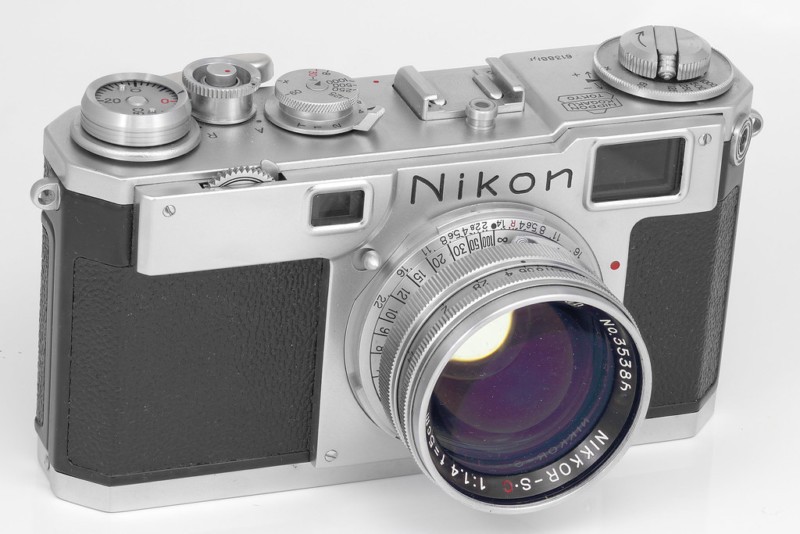
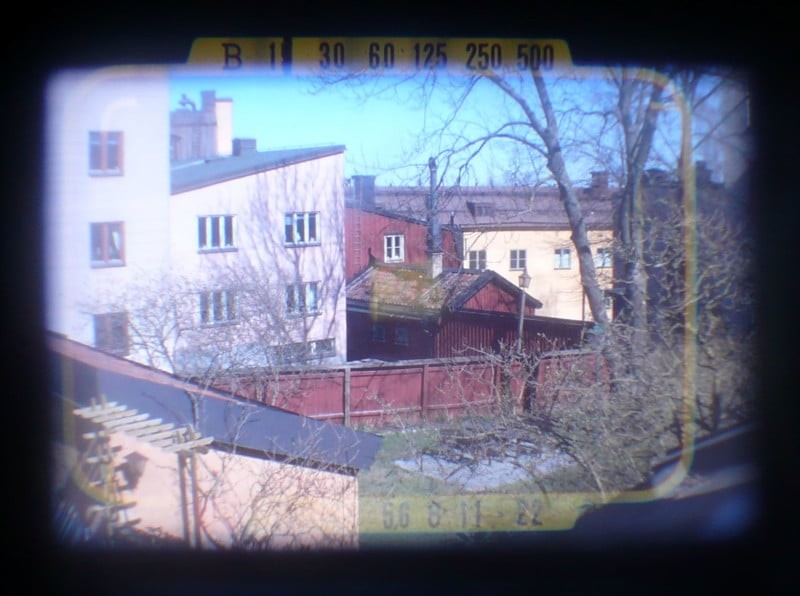


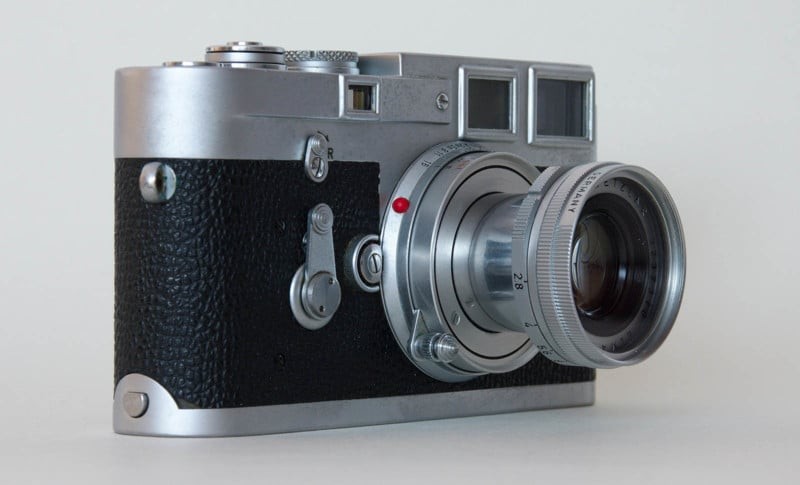
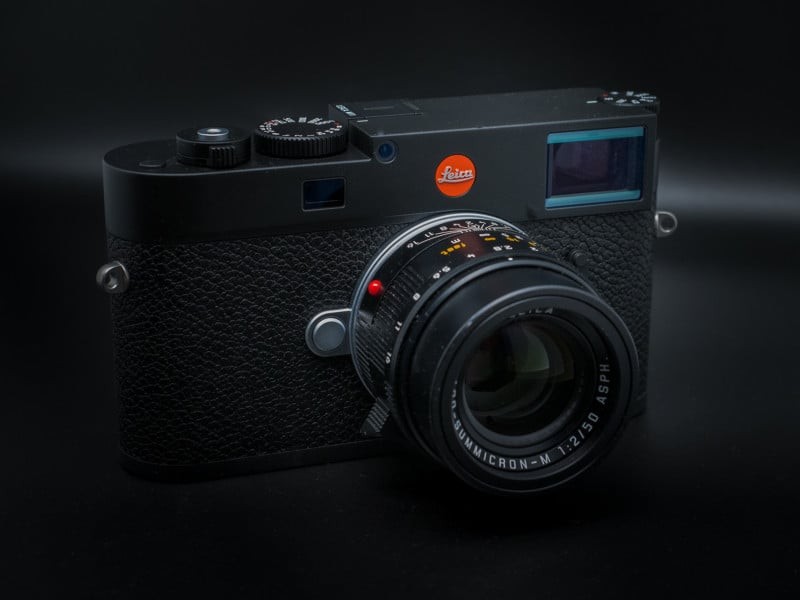
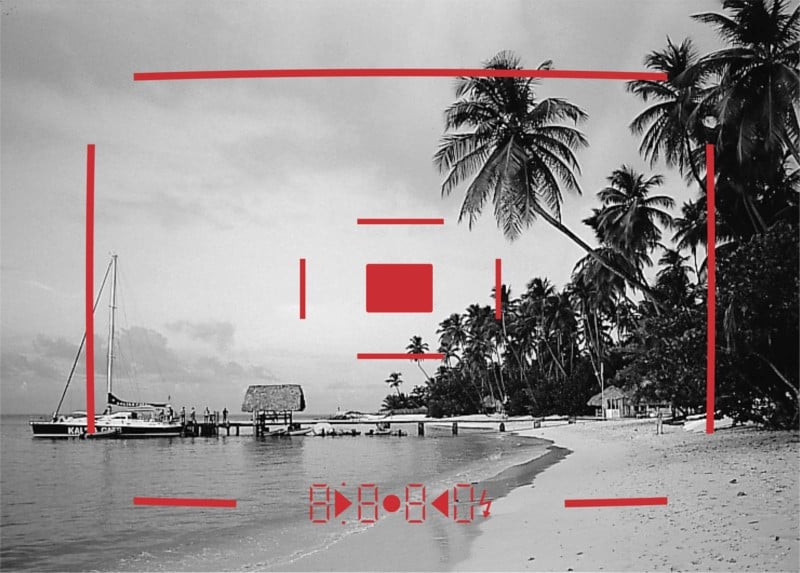
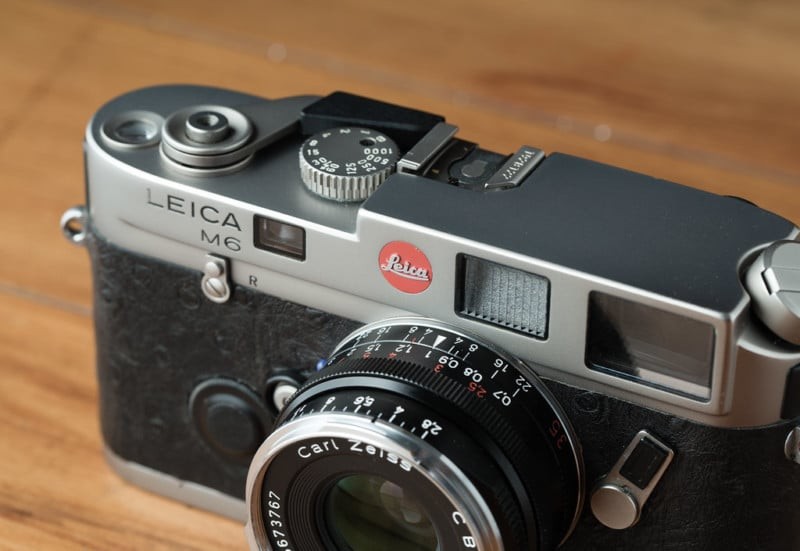

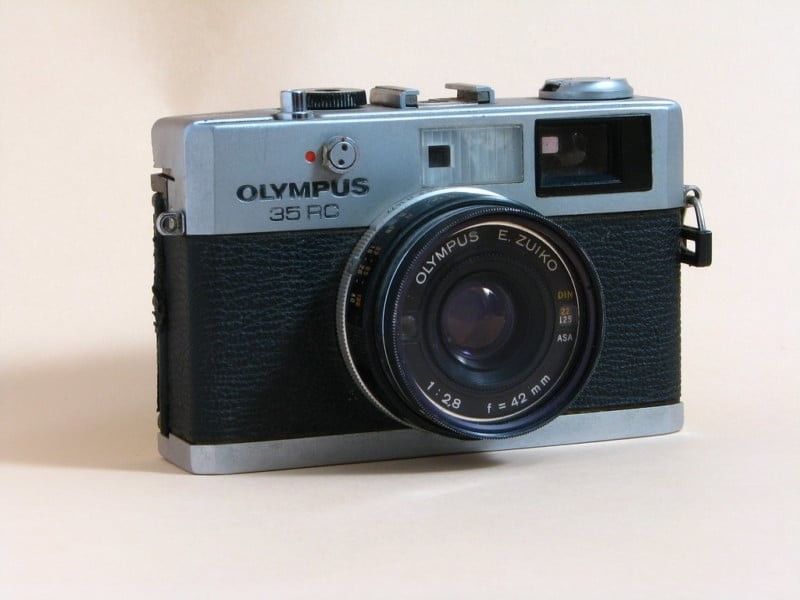
6. Why Choose a Rangefinder Camera?
Choosing a rangefinder camera is about embracing a different philosophy of photography. It’s for those who appreciate:
- Tactile Experience: The physical act of focusing and setting exposure manually.
- Compact Size: Ideal for travel and discreet street photography.
- Image Quality: Prime lenses offer sharpness and clarity.
- Historical Significance: Connecting with the legacy of iconic photographers.
- Minimalism: Stripping away unnecessary features to focus on essential elements.
7. Types of Rangefinder Cameras Available
Rangefinder cameras come in various forms, each with its unique characteristics:
7.1. Classic Film Rangefinders
These cameras offer a vintage experience, requiring manual film loading, advance, and rewind. They often lack modern conveniences like autofocus but provide a direct connection to the photographic process.
- Leica M Series: Renowned for their build quality and image quality.
- Canon Canonet QL17: A more affordable option with a fast lens and easy operation.
- Olympus 35 RC: Compact and reliable, offering both automatic and manual exposure.
7.2. Modern Digital Rangefinders
These cameras combine the rangefinder focusing system with digital technology, offering a blend of old and new.
- Leica M11: The latest in the M series, featuring a high-resolution sensor and advanced features.
- Pixii Camera: A modern take on the rangefinder, with a focus on simplicity and connectivity.
7.3. Fixed-Lens Rangefinders
These cameras have a permanently attached lens, simplifying the shooting experience and often resulting in compact designs.
- Olympus XA: An ultra-compact rangefinder with a clamshell design.
- Yashica Electro 35: Known for its electronic shutter and unique exposure system.
8. Notable Rangefinder Camera Models
Here are a few notable rangefinder camera models that have made an impact on photography:
| Model | Type | Key Features |
|---|---|---|
| Leica M3 | Film | First to combine viewfinder and rangefinder; iconic design and build quality |
| Canon Canonet QL17 GIII | Film | Affordable; fast 40mm f/1.7 lens; easy loading system |
| Olympus 35 RC | Film | Compact; auto and manual exposure; durable construction |
| Leica M11 | Digital | High-resolution sensor; advanced metering; classic rangefinder experience |
| Pixii Camera | Digital | Unique design; interactive viewfinder; Leica M-mount compatibility |
| Fujifilm X100V | Digital (ish) | Retro design; hybrid viewfinder; excellent image quality (though technically not a true rangefinder focusing system) |
9. Rangefinders to Consider
9.1. Film Rangefinders
- Olympus RC: Extremely compact with auto and manual settings. Features a 42mm f/2.8 lens.
Photo by Shaun Battick and licensed under CC BY 2.0
- Hasselblad XPan: Uses 35mm film and captures panoramic images in 24 x 65mm. Made of titanium and aluminum with interchangeable lenses.
- Fuji GW690iii: Takes 6 x 9cm medium format photos with an EBC Fujinon 90mm, f/3.5 lens. No light meter or battery required.
- Canonet: Compact and quiet with a 40mm F1.7 lens. Offers parallax compensation, though mercury batteries for the light meter are unavailable.
9.2. Digital Rangefinders
- Pixii: Features a 26-megapixel APS-C BSI CMOS sensor and uses the Leica M-mount lens system. Offers a monochrome shooting mode and an interactive optical viewfinder.
- Leica M11: Includes a 60-megapixel full-frame BSI CMOS sensor and a viewfinder with focusing assistance.
10. Understanding the Terminology
Navigating the world of rangefinder cameras involves understanding specific terms:
- Rangefinder: A focusing mechanism that uses triangulation to measure distance.
- Coupled Rangefinder: A system where the rangefinder is linked to the lens, automatically adjusting focus.
- Parallax Error: The difference between what the viewfinder sees and what the lens captures.
- Frame Lines: Markings in the viewfinder that indicate the area that will be captured by the lens.
- Prime Lens: A lens with a fixed focal length, known for its sharpness and simplicity.
11. Tips for Using a Rangefinder Camera Effectively
To get the most out of your rangefinder camera, consider these tips:
- Practice Manual Focusing: Develop your ability to quickly and accurately focus using the rangefinder mechanism.
- Understand Parallax Correction: Learn how to compensate for parallax error, especially at close distances.
- Choose the Right Lens: Select prime lenses that match your shooting style and subject matter.
- Master Exposure: Use a light meter or learn to estimate exposure settings manually.
- Embrace the Limitations: Appreciate the simplicity and focus on composition and timing.
12. Maintenance and Care
Proper maintenance ensures your rangefinder camera lasts for years:
- Clean Lenses Regularly: Use a microfiber cloth and lens cleaning solution to keep lenses free of dust and smudges.
- Store Properly: Keep the camera in a dry, dust-free environment.
- Service Regularly: Have the camera serviced by a professional to ensure proper alignment and function.
- Handle with Care: Avoid dropping or exposing the camera to extreme temperatures or humidity.
13. How to Determine the Value of a Rangefinder Camera
Determining the value of a rangefinder camera involves several factors:
- Condition: Cameras in excellent condition command higher prices.
- Rarity: Rare or limited-edition models are more valuable.
- Model: Some models are more sought after than others due to their features or reputation.
- Accessories: Original accessories can increase value.
- Market Demand: Prices vary depending on current demand among collectors and enthusiasts.
Websites like eBay, KEH Camera, and specialized forums can provide insights into current market values.
14. How Rangefinder Cameras Work
Rangefinder cameras operate on a unique focusing principle that distinguishes them from other camera types. The core of their operation lies in the rangefinder mechanism itself, which uses triangulation to accurately measure the distance to a subject.
14.1. The Rangefinder Mechanism
The rangefinder mechanism consists of two windows: the main viewfinder and a secondary window, separated by a specific distance known as the “baseline.” The secondary window projects an image onto the viewfinder, creating a double image. When the photographer adjusts the focusing ring on the lens, a series of levers and mirrors inside the camera move, aligning the two images into a single, sharp image.
14.2. Focusing Process
- Compose Your Shot: Look through the viewfinder to frame your subject.
- Identify the Double Image: Notice the faint double image or split image in the center of the viewfinder.
- Adjust the Focusing Ring: Rotate the focusing ring on the lens until the double image merges into a single, sharp image.
- Confirm Focus: Once the images align, the subject is in focus.
14.3. Accuracy and Precision
The accuracy of a rangefinder depends on the length of the baseline. A longer baseline provides greater precision, allowing for more accurate focusing, especially with longer focal length lenses.
15. Rangefinder vs. SLR vs. Mirrorless
Here’s a comparison of rangefinder, SLR, and mirrorless cameras:
| Feature | Rangefinder | SLR | Mirrorless |
|---|---|---|---|
| Focusing | Manual; double-image alignment | Autofocus; manual focus via focusing screen | Autofocus; manual focus with electronic assistance |
| Viewfinder | Optical; shows wider view than captured frame | Optical; what you see is what you get | Electronic; customizable display |
| Size | Compact | Larger | Compact |
| Noise | Quiet | Louder due to mirror slap | Quiet |
| Lens Selection | Limited to prime lenses | Wide range of lenses | Wide range of lenses |
| Parallax Error | Yes, at close distances | No | No |
| Modern Features | Minimal | More features | Advanced features |
16. Is a Rangefinder Camera Right for You?
Consider these factors to determine if a rangefinder is right for you:
- Manual Focus Preference: Do you enjoy the tactile experience of manual focusing?
- Photography Style: Are you a street photographer, portrait shooter, or documentary filmmaker?
- Budget: Can you afford the higher cost of digital rangefinders or the ongoing cost of film?
- Patience: Are you willing to invest time in learning the nuances of rangefinder photography?
- Desire for Simplicity: Do you value a minimalist approach to photography?
If you answered yes to most of these questions, a rangefinder camera might be an excellent choice.
17. Common Issues and Troubleshooting
Here are some common issues and how to troubleshoot them:
| Issue | Possible Cause(s) | Solution(s) |
|---|---|---|
| Difficulty Focusing | Misaligned rangefinder; poor eyesight | Calibrate rangefinder; use diopter adjustment; clean viewfinder |
| Soft Images | Inaccurate focusing; dirty lens | Practice focusing; clean lens; use a sharper lens |
| Light Meter Inaccurate | Dead battery; faulty meter | Replace battery; have meter serviced |
| Film Advance Problems | Improper loading; mechanical issue | Reload film correctly; have camera serviced |
| Parallax Error Noticeable | Shooting too close; not compensating correctly | Move further from subject; adjust composition based on distance |
18. The Future of Rangefinder Cameras
Despite the dominance of mirrorless cameras, rangefinders continue to evolve. Manufacturers are incorporating modern features while preserving the classic rangefinder experience. The future may bring:
- Advanced Sensors: Higher resolution and improved low-light performance.
- Hybrid Viewfinders: Combining optical and electronic views.
- Connectivity: Seamless integration with smartphones and cloud services.
- Niche Appeal: Catering to photographers seeking a unique and deliberate shooting experience.
19. How to Get Started with Rangefinder Photography
- Choose a Camera: Select a rangefinder camera that fits your budget and needs.
- Learn the Basics: Understand the principles of manual focus, exposure, and composition.
- Practice Regularly: Dedicate time to practice and experiment with different settings and subjects.
- Join a Community: Connect with other rangefinder enthusiasts for tips, advice, and inspiration.
- Read and Research: Explore books, articles, and online resources to deepen your knowledge.
20. FAQs About Rangefinder Cameras
| Question | Answer |
|---|---|
| What is a rangefinder camera? | A camera that uses a double-window system for manual focusing. |
| How does a rangefinder camera work? | By aligning two images in the viewfinder until they merge into one sharp image. |
| What are the benefits of using a rangefinder camera? | Accurate focus, compact size, quiet operation, and high-quality prime lenses. |
| What are the limitations of rangefinder cameras? | Parallax error, manual focus, and limited lens selection. |
| Are rangefinder cameras good for beginners? | They can be challenging but rewarding for beginners willing to learn manual techniques. |
| What are some popular rangefinder camera models? | Leica M series, Canon Canonet QL17, and Olympus 35 RC. |
| How do I maintain a rangefinder camera? | Clean lenses regularly, store properly, and have it serviced by a professional. |
| How much does a rangefinder camera cost? | Prices vary widely depending on the model and condition. |
| What is parallax error? | The difference between what the viewfinder sees and what the lens captures, especially at close distances. |
| Can I use a rangefinder camera for professional photography? | Yes, many professionals use rangefinders for specific types of photography. |
Embrace the Art of Rangefinder Photography
The world of rangefinder cameras offers a unique blend of history, precision, and artistry. Whether you’re a seasoned photographer or just starting out, exploring the rangefinder system can deepen your appreciation for the craft. Remember, the journey is as important as the destination. Embrace the challenges, celebrate the victories, and let your creativity soar.
Still have questions? Don’t hesitate to ask! At WHAT.EDU.VN, we’re here to provide quick, accurate answers to all your photography questions. Contact us at 888 Question City Plaza, Seattle, WA 98101, United States, or reach out via Whatsapp at +1 (206) 555-7890. Visit our website at what.edu.vn and experience the convenience of free expert advice. Get your questions answered today and elevate your understanding of rangefinder cameras.
